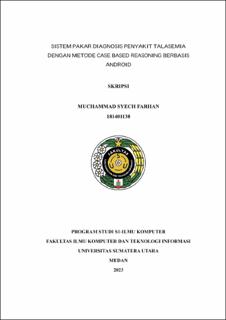| dc.description.abstract | With the advancement of technology in the field of medicine, the identification of various diseases, including those caused by viruses, bacteria, lifestyle, and hereditary factors, has become increasingly crucial. While diseases originating from viruses, bacteria, and lifestyle are more easily recognized by the public, hereditary diseases such as Thalassemia are often challenging to detect and can have serious consequences for offspring. It is recorded that every year around 70,000 babies with thalassemia are born throughout the world. Indonesia is even included in the category of Thalassemia belt countries in the world, namely countries with a high frequency of the Thalassemia gene. Based on 2017 YTI and POPTI data, general public screening results from 2008−2017 showed a carrier rate of 5.8%; Meanwhile, screening of thalassemia families in 2009-2017 showed a carrier rate of 28.61%. The lack of awareness among the public about Thalassemia and the difficulty in identifying the symptoms of this disease are major issues. Therefore, this research proposes the development of a Case Based Reasoning (CBR) based system to assist the public in recognizing the symptoms of Thalassemia and conducting early diagnosis. CBR is chosen because it can leverage past experiences in similar cases to formulate new diagnoses. Test results indicate that this system can identify Thalassemia symptoms with previous thallasemia case, provide recommendations for early diagnosis, and serve as an effective educational tool to enhance public understanding of Thalassemia. Thus, the implementation of this system is expected to reduce the negative impact of this disease through preventive measures and early intervention, improve the quality of life for patients, and contribute to overall efforts to increase public health awareness. | en_US |


